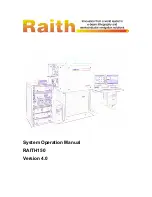
4
3.3 Display Units
The display can show the flash rate in revolutions per minute
(RPM) or per second (RPS or hertz). To switch between display
modes, press the
DISP
lay button (shown right). The display
units will toggle at each press (RPM < > RPS).
4.0 BRIGHTNESS
The strobe’s brightness depends on how wide the LED flash pulse is; the
wider the pulse, the brighter the visual output from the LEDs. Since the
strobe is primarily used on reciprocating or rotating targets, there is a
downside to the wider flashes. All strobes work by giving short bursts of
light (the pulse width) at a rapid repetition rate (the flash rate). Strobes
rely on the persistence of the human eye (the ability to remember an
image) and its response to bright light to give an apparent stop motion
image. Imagine a shaft rotating at 6000 RPM or one rotation every 1/100
of a second (10 msec). If the strobe flashes once every 10 msec for a brief
moment, the user sees the flash at the same spot in the rotation of the
shaft and the persistence of the eye remembers this until the next flash
making the shaft appeared to be stopped. As the target is rotating, there
is some movement evident during the strobe flash. The longer the flash
duration, the more obvious the rotation is and this increases the blur.
4.1 Calculating Blur
Blur can be calculated. For example, if the shaft takes 10 msec to
complete one revolution and the strobe flash duration is 100 μsec
(1/100 of a millisecond), the shaft will turn:
(flash duration/time per rotation) x 360°, which is (.0001/.01) x 360 = 3.6°
So you will see the shaft move 3.6°. As the flash pulse widens, you
will see greater degrees of rotation which results in more blur and a
brighter perceived illumination (the LEDs are on longer so the average
light the eyes see is greater). The trade-off is blur versus brightness.


































